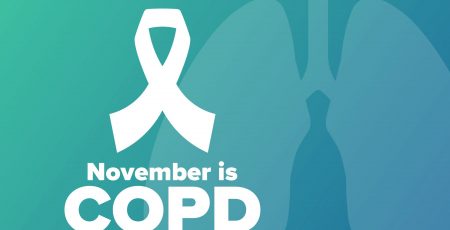24 Mar We’ve Gained Some Ground In The War Against COPD
COPD is a serious public health problem in the United States, and is the third leading cause of death. Falling under the umbrella of COPD are chronic bronchitis, emphysema, and small airways disease, which is characterized by inflammation and thickening of the mucosae of the airways, weakening or destruction of alveolar walls, and excess mucus production. The overall effect of these conditions is airflow limitation, especially on expiration, and the symptoms are progressive for most COPD sufferers. As the capacity of the lung continues to decline, so often does quality of life, with patients experiencing increasing difficulty in performing activities of daily living.
A surveillance report issued in 2002 by the Centers for Disease Control and Prevention (CDC) noted that rates of hospitalizations and mortality for COPD had increased from 1980 to 2000, but more recent information from national datasets through 2011 shows that the mortality rate in men and some age groups, and hospitalization rates in both men and women have declined since 1999. Specifically, while death rates increased among adults aged 45 to 54 years and among American Indian/Alaska Natives, they declined among Hispanics, Asian/Pacific Islanders, men, and among the overall population between the ages of 55 and 74. In other words, the age-adjusted prevalence, death rate in men, and hospitalizations for COPD since 1999 have gone down, suggesting progress in the prevention of COPD in the United States.
Smoking is the dominant risk factor for COPD in the United States and contributed to about 80% of COPD deaths in 2000 to 2004. Although the relationship between changes in the rate of smoking and changes in health-care use and mortality for COPD is not exactly defined, its notable that since 1965, the prevalence of smoking has decreased dramatically. In 1965, 42.4% of adults 18 and over smoked; that percentage as of 2010 had dropped to 19.3%, meaning that the prevalence of smoking in 2010 was half the 1965 rate. Among adults with self-reported COPD in 2011, by contrast, 39% continued to smoke. These numbers point to the inference that the significant decline in smoking over the past 20 years has contributed to the drop in COPD incidence and mortality. With continued declines in smoking prevalence and improved management of patients with COPD, mortality rates can be expected to decline in future years.





No Comments